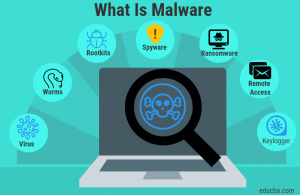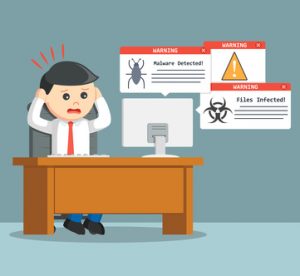If you think of malware compromised websites, what kinds of sites come to mind? Pharmaceutical sites, porn sites or sites bombarding you with pop-up advertisements? Although these sites may very well be malicious, you are actually more likely to run into malware when visiting one of your regular e-commerce or news sites on a daily basis. 75% of legitimate websites today are at risk for malware. Malware, which is also known as malicious software, is designed to harm a website and its visitors.

There are often very obvious signs that your website has been infected with malware such as redirecting to another malicious site. However, it happen when the signals are not so clear. For example, a backdoor file is a type of malware attackers created to access a web site while remaining undetected.
How to Identify Malware

Malware can be found in the HTML files, PHP files, database and a variety of other areas of your website. If you think that in any of these places a cybercriminal has been messing with, there are ways to check that they have attack your web.
One of the simplest and most accurate ways of detecting malware on your website is a website scanner. Usually scanners are designed to automatically search the files of a website for known malware scripts, algorithms, backdoor files and malicious code. When malware is detected, you should be instantly alerted.
You can also detect malware by manually checking the source code for any suspicious scripts on your website. The script attribute specifies the URL of an external file. If you find an unrecognizable site or file after “< script src= >” in your code, you might get malware.
Another way of viewing malware is to pay special attention to your iframe attribute. This line of code is used for defining the url of a document to be inserted in the iframe. When you open your code line, < iframe src=”URL “>, and find that the URL has been modified without your knowledge, you can assume that this is a malicious link.
How to Remove Malware
Now that you are able to identify the most common uses of malware, you should become familiar with how to remove it.
Not only is a website scanner a great tool for malware detection, but also some scanners are able to clean up the malware. For example, the SiteLock SMART scanner can detect and delete malware from a website. It uses a scan-based file transfer protocol (FTP) to automatically download, scan, and clean files from a website. Once the files are clean it will upload the files back to its server automatically.
Sometimes a website scanner detects malware on a website but is unable to delete it without disrupting the website’s functionality. Through manually deleting the malware using the same method as SiteLock SMART you or an engineer would need to take matters into your own hands at that stage. This can be achieved by accessing the web site manually and checking for malicious code for every file, line by line. Once the malware is found, it needs to be removed manually. You can bring the clean version back into the server from there. Malware can be used to store information, to remove data and to shut down a whole site.



